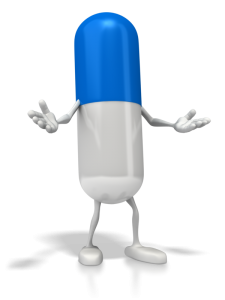1st August, 2018, Dr Chee L Khoo
After metformin and sulphonylurea, under the PBS we can choose between a DPP4 inhibitor, an SGLT2 inhibitor, a thiazolidinedione or a GLP1-RA injectable. Because of the potential adverse effects of cardiac failure with thiazolidinedione, realistically, it’s a three horse race. The cost effectiveness of each of the class of agents has not been explored thus far. Neither has there been any head to head comparison on their efficacy on cardiovascular outcomes. It is unlikely that there will anytime soon either.
A recent meta-analysis was performed to compare efficacies of SGLT-2 inhibitors, GLP-1 agonists, and DPP-4 inhibitors on mortality and cardiovascular end points. Randomised clinical trials enrolling participants with type 2 diabetes and a follow-up of at least 12 weeks were included, for which SGLT-2 inhibitors, GLP-1 agonists, and DPP-4 inhibitors were compared with either each other or placebo or no treatment. The primary outcome was all-cause mortality. The secondary outcomes were cardiovascular (CV) mortality, heart failure (HF) events, myocardial infarction (MI), unstable angina, and stroke. 236 trials with 176 310 participants were analysed.
Primary outcomes
Compared to controls, SGLT2 inhibitors (HR 0.80) and GLP-1 agonists (0.88) were associated with reduction in all cause mortality. DPP4 inhibitors were not associated with reduction in all cause mortality. There was no significant difference between the SGLT2 inhibitors and GLP1- agonist.
Secondary outcomes
Once again, both SGLT2i (HR 0.79) and GLP1-agonists (HR 0.85) were associated with lower CV mortality and DPP4i were not. The SGLT-2 inhibitors were associated with additional cardiovascular benefits for heart failure events compared with incretin-based therapies and control groups and for MI events compared with control groups.
If were to rank them side by side, for all-cause and cardiovascular mortality, SGLT-2 inhibitors were most likely to rank best, GLP-1 agonists second best, and DPP-4 inhibitors worst. The SGLT-2 inhibitors were most likely to rank best for heart failure and MI outcomes, and GLP-1 agonists were most likely to rank best for stroke outcomes.
Adverse outcomes
All 3 classes resulted in significantly more hypoglycemic events than did control groups, despite SGLT-2 inhibitors and incretin-based therapies using glucose-dependent mechanisms with low theoretical risks of hypoglycaemia. This could be due to the “loose” definition of hypoglycaemia in some of the studies. When the definition was more robustly defined, there were no difference in the incidence of major hypoglycaemia.
Of course, the SGLT2i were associated with more genital infections. Canagliflozin was associated with more lower limb amputations but not empagliflozin. This study could not fully exclude the possibility of a safety signal for all SGLT2i with amputations. In this study, DPP4i were associated with increased risk of acute pancreatitis.
After lifestyle, metformin and sulphonylurea, there are now many different classes of anti-diabetic drugs for patients with type 2 diabetes (T2D) who has not achieved their glycaemic targets. It used to be just matter of choosing the most potent hypoglycaemic agent to get our patients to target. However, results from most recent cardiovascular outcome trials (CVOT) and from this meta-analysis has shown that some classes are better than others in relation to heart health.
In fact, in the American Diabetes Association (ADA)’s latest management guidelines for patients with diabetes and heart disease, the choice of medication after lifestyle and metformin fails should be include an agent validated to improve heart health.
Access the abstract here.
Reference:
Zheng SL, Roddick AJ, Aghar-Jaffar R, Shun-Shin MJ, Francis D, Oliver N, Meeran K. Association Between Use of Sodium-Glucose Cotransporter 2 Inhibitors, Glucagon-like Peptide 1 Agonists, and Dipeptidyl Peptidase 4 Inhibitors With All-Cause Mortality in Patients With Type 2 Diabetes: A Systematic Review and Meta-analysis. JAMA. 2018 Apr 17;319(15):1580-1591. doi: 10.1001/jama.2018.3024.
